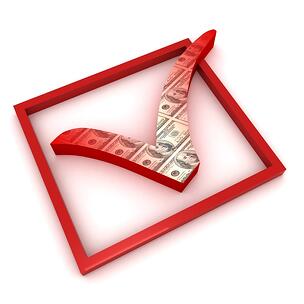G etting a mortgage on your commercial real estate assets can be a lengthy and complicated process. Furthermore, many of the most attractive financing terms are available on investment property rather than on property that is owner-occupied. This is especially true for businesses that are not eligible for Small Business Administration financing and are looking for long-term debt on their properties.
etting a mortgage on your commercial real estate assets can be a lengthy and complicated process. Furthermore, many of the most attractive financing terms are available on investment property rather than on property that is owner-occupied. This is especially true for businesses that are not eligible for Small Business Administration financing and are looking for long-term debt on their properties.
Before sourcing a commercial loan, companies that are asset owners and users frequently set up a subsidiary company to own the asset. The company's operating division can then lease the asset from the subsidiary. From an income statement and balance sheet perspective, the transaction makes essentially no difference since the revenue all passes through to the parent company, but it makes a significant difference to the lending market. The asset can be financed as an investment and qualify for the favorable terms available from life insurance and conduit lenders.
While requirements vary between lenders, you can expect to prepare the following items:
 etting a mortgage on your commercial real estate assets can be a lengthy and complicated process. Furthermore, many of the most attractive financing terms are available on investment property rather than on property that is owner-occupied. This is especially true for businesses that are not eligible for Small Business Administration financing and are looking for long-term debt on their properties.
etting a mortgage on your commercial real estate assets can be a lengthy and complicated process. Furthermore, many of the most attractive financing terms are available on investment property rather than on property that is owner-occupied. This is especially true for businesses that are not eligible for Small Business Administration financing and are looking for long-term debt on their properties.Before sourcing a commercial loan, companies that are asset owners and users frequently set up a subsidiary company to own the asset. The company's operating division can then lease the asset from the subsidiary. From an income statement and balance sheet perspective, the transaction makes essentially no difference since the revenue all passes through to the parent company, but it makes a significant difference to the lending market. The asset can be financed as an investment and qualify for the favorable terms available from life insurance and conduit lenders.
While requirements vary between lenders, you can expect to prepare the following items:
- Property operating statements and financial information for at least two full years and an additional year-to-date statement. The operating statements should clearly delineate a property's income and expenses, breaking out capital and recurring expenses.
- Leases and tenant financial information. To analyze the stability and safety of the property's income stream, most lenders will want to see the actual lease documents and any financial information that you have on the tenant. If your company is the only tenant, you will need to disclose your financial information even if you are privately held.
- Building information. The lender will frequently request copies of your tax bills, deeds, and vendor contracts. This helps them to verify the expenses that you underwrote on your operating statements as well as project what their exposure will be if you default on the loan and they have to take the property back.
- Borrower financial data. While the rent from the tenant ultimately pays the mortgage, you will usually have to demonstrate that your business is creditworthy even under a non-recourse loan. Lenders frequently request current and historical balance sheets and income statements for your business and may also want audited statements or tax returns for further substantiation. In addition, be prepared to prepare a schedule of real estate that your company owns.
- An Appraisal. Appraisals are prepared by a third-party that analyzes your building's condition, the income it generates and the prospects of the surrounding market to determine what its value would be. Lenders frequently use it to decide on a loan amount -- it's the "V" in the LTV ratio.
- A Phase One Environmental Report. The Phase One report analyzes the site and any surrounding sites to determine if there is a risk of environmental contamination. If the site is likely to be contaminated, the lender will probably require a Phase Two report. Phase Twos involve taking soil and water samples to determine how much contamination, if any, is present and what needs to be done about it.
- A Property Condition Assessment/Report. PCAs and PCRs are thorough building inspections. Frequently prepared by engineering firms, they let the lender know what work, if any, is required in both the short- and long-term to keep the building operating in good condition.
- Estoppel Certificates. Generated by tenants, estoppel certificates are documents that are attached to a copy of the lease to certify that the attached lease represents the actual agreement under which they occupy the building and pay rent.







